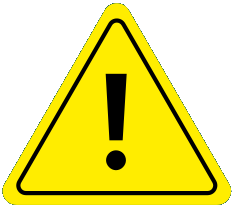Addiction Relief
Overcoming addiction is a challenging journey, but you don’t have to face it alone. At Astera Health, we’re here to support you every step of the way. Our dedicated team combines medications, counseling, and behavioral therapies to provide a personalized, holistic approach to treating opioid dependency.
You are not alone—together, we can work toward lasting change.
About Opioid Dependency
When someone develops a dependence on opioids, they may experience withdrawal symptoms when the amount of opioids in their system decreases or is eliminated. These symptoms, combined with intense cravings, are major challenges of opioid dependence and can make recovery especially difficult.
Opioids include prescription pain medications such as Codeine, Oxycodone (Percocet, OxyContin), Hydrocodone (Vicodin, Norco, Lorcet), and Morphine (MS Contin), as well as illicit drugs like heroin and fentanyl.
Medication-assisted treatment (MAT) can help reduce cravings and withdrawal symptoms, allowing the brain to heal. This healing process enables you to focus on regaining control of your daily activities, responsibilities, and relationships—all while moving forward without the grip of opioids.
For more information or to start this program, talk to your primary care provider about this treatment or call the RN Health Coaches, at 218-631-3510, ext. 7870 to talk about the opioid management program.
What Is Medication-Assisted Treatment?
Medication-Assisted Treatment (MAT) is an evidence-based approach that combines FDA-approved medications with counseling and behavioral therapies to treat opioid use disorder. Research has consistently shown that when MAT is integrated with counseling and social support, it provides the most effective and comprehensive treatment for opioid use disorder, supporting long-term recovery.
FDA-approved medications for opioid use disorder include buprenorphine/naloxone (Suboxone, Zubsolv, Sublocade) and naltrexone (Vivitrol). These medications help reduce cravings, manage withdrawal symptoms, and improve the chances of maintaining recovery. They are available in various forms, including dissolvable tablets, films, and injections, providing flexibility to meet individual needs.
How Does Medication-Assisted Treatment Work?
Buprenorphine must be used carefully. A provider will first prescribe a low dose to start taking after withdrawal symptoms begin. Early in the program, dosage levels may be adjusted as needed at daily or weekly visits with a suboxone provider. When a maintenance dose is reached, visits with a suboxone provider will occur monthly or as needed. Buprenorphine may be taken for days, months, or years—if it is needed to prevent relapse. Once stable and in recovery, buprenorphine dosage may be lowered or eliminated but must be done slowly and over time. This process is called tapering. Tapering works best with the help of a primary care or substance abuse treatment provider after progress has been made.
Multidisciplinary Team Approach
- Local NA and AA groups
- Personal Support Group (such as family and friends)
- Pharmacist
- Primary Care Providers
- Social Worker
Benefits of Medication-Assisted Treatment
The goal of Medication-Assisted Treatment is full recovery. MAT, in combination with counseling and therapy, has been shown to:
- Help in regaining a healthy, normal life
- Help increase the individual's ability to maintain employment
- Help reduce cravings and prevent withdrawal symptoms
- Improve how long a person is expected to live by significantly reducing the risk of overdose
- Increase the chance of staying in treatment

